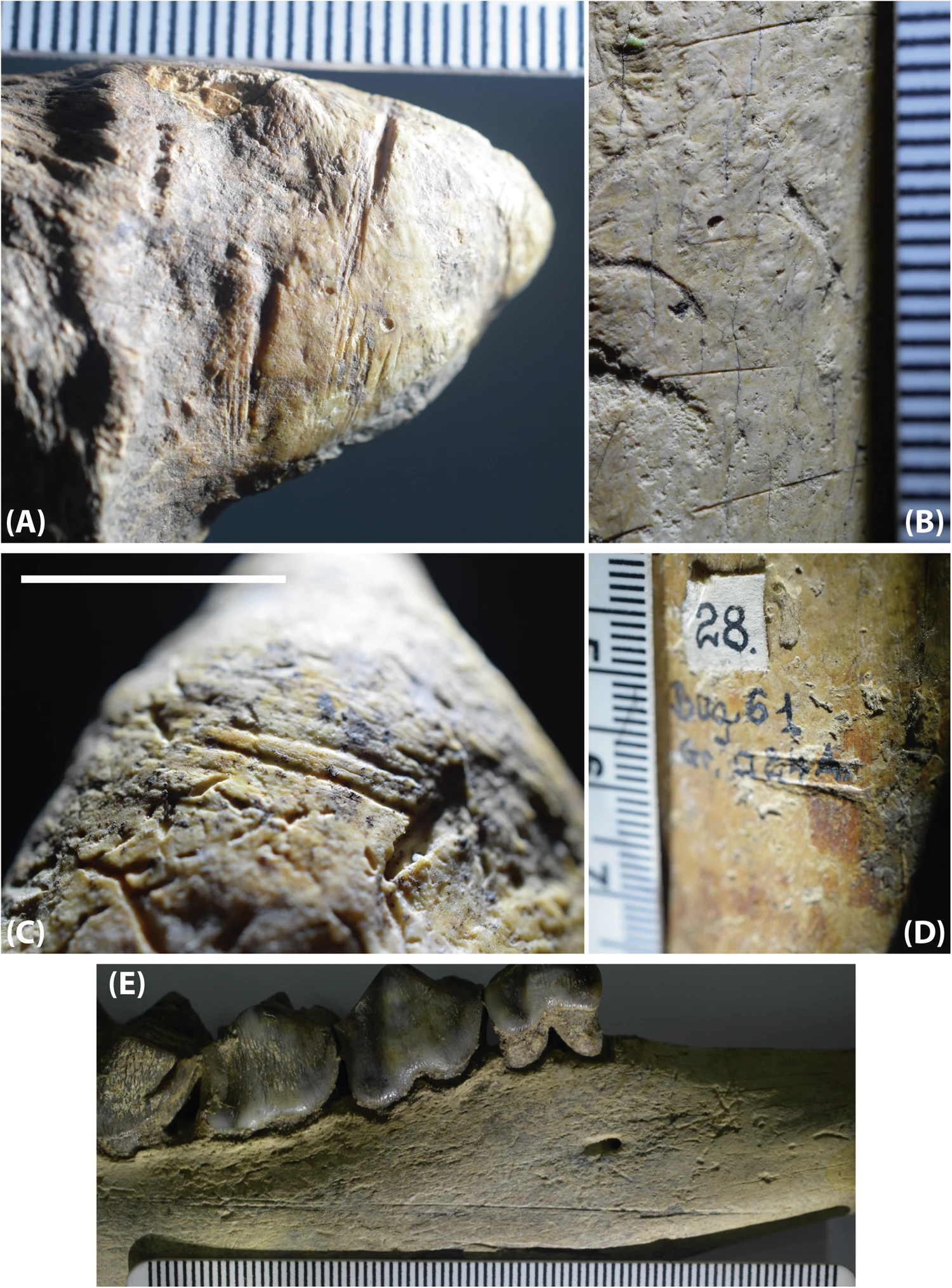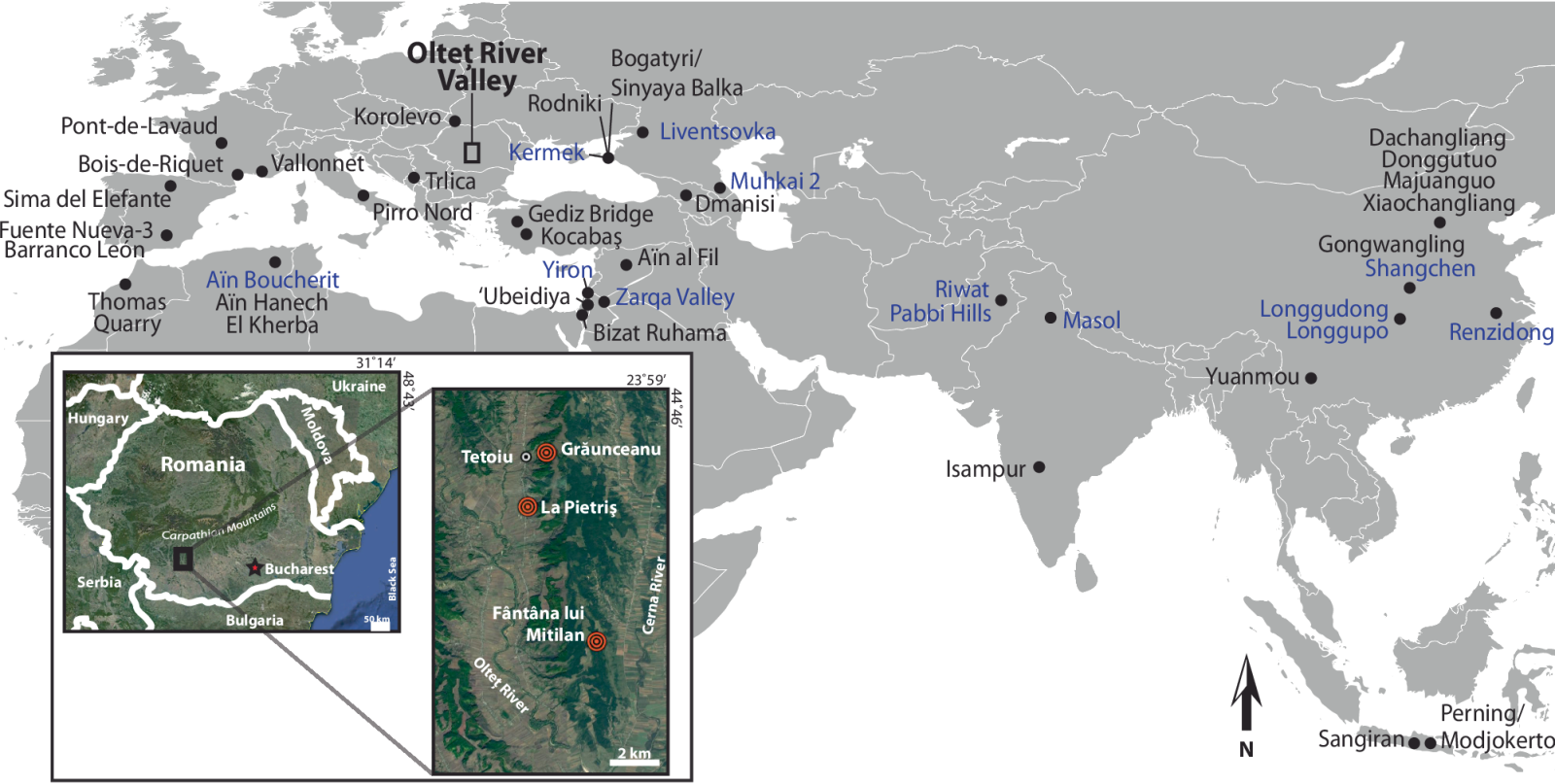Hominini in Europe: a presence much older than expected 🦴
Published by Cédric,
Article author: Cédric DEPOND
Source: Nature Communications
Other Languages: FR, DE, ES, PT
Article author: Cédric DEPOND
Source: Nature Communications
Other Languages: FR, DE, ES, PT
Follow us on Google News (click on ☆)
The origins of humanity lie in Africa, but the first representatives of the human lineage quickly explored other continents. A recent study, published in Nature Communications, provides strong evidence that Hominini walked on European soil much earlier than previously thought.

Cut marks on the bones found
A major discovery in Romania
At the Grăunceanu site, researchers analyzed thousands of animal bones, some of which bear cut marks. These marks, characteristic of human intervention, suggest that Hominini used tools to skin their prey.
The dating of the fossils, carried out using advanced techniques, indicates an age of approximately 1.95 million years. This makes it the oldest evidence of human presence in Europe, surpassing previous discoveries by several hundred thousand years.
An environment conducive to survival
Isotopic analyses reveal that the region's climate was temperate at the time, with mild winters and abundant seasonal rainfall. These conditions likely facilitated the adaptation of the first Hominini to these latitudes.
The presence of heat-adapted animal species, such as pangolins and ostriches, confirms a favorable environment. These elements suggest that migrations out of Africa may have occurred during interglacial periods, which were more temperate.
Who were these first Europeans?
No human fossils have been found at the site, but the traces left on animal bones indicate human activity. Researchers suggest the possibility of a species close to Homo erectus, although its precise identification remains uncertain.
This discovery reignites the debate on the dispersal routes of Hominini. It shows that these early humans were capable of adapting to varied environments, well before what was previously thought.

Sites in blue text indicate an assumed dating >2 Ma.
The inset at the bottom left shows the locations of the fossil sites studied.
A rewriting of human history
Grăunceanu thus becomes the oldest European site attesting to human presence. This discovery invites a reconsideration of other archaeological sites to better understand the migrations and adaptations of the first Hominini.
These results also highlight the importance of interdisciplinary studies, combining archaeology, paleontology, and geochemistry, to trace the complex history of our ancestors.
To go further: what is a Hominini?
Hominini refers to a group of primates including modern humans (Homo sapiens) and their direct ancestors, as well as some closely related species such as australopithecines. These beings are distinguished by their bipedalism, their ability to make tools, and their increased brain development.
Hominini appeared in Africa approximately 6 to 7 million years ago. Their evolution has been marked by several species, including Homo habilis, considered one of the first to use tools, and Homo erectus, known for its migrations out of Africa.
These species developed adaptive survival strategies, such as hunting and gathering, as well as the use of fire. Their dispersal across Eurasia testifies to their ability to adapt to varied environments, from African savannas to temperate European forests.
Today, studies on Hominini rely on fossils, lithic tools, and genetic analyses. These researches allow us to trace the complex history of humanity and understand how our ancestors shaped the world.